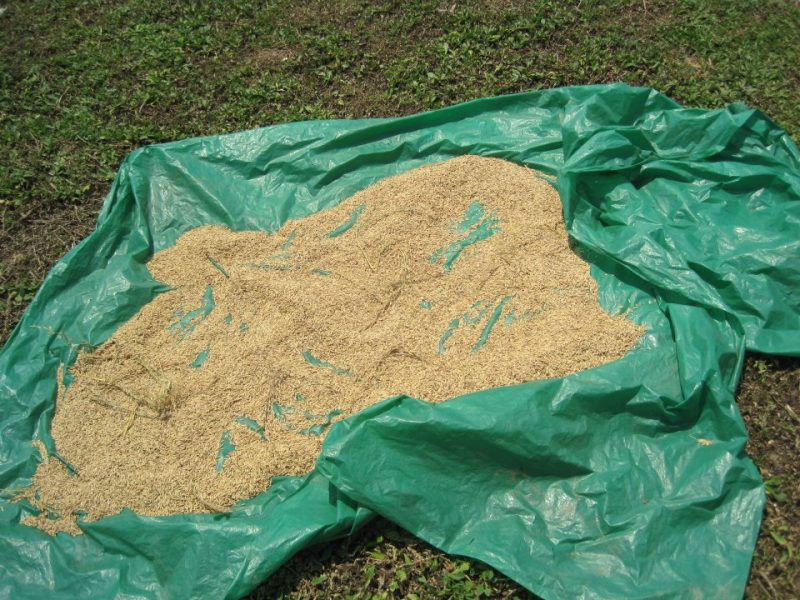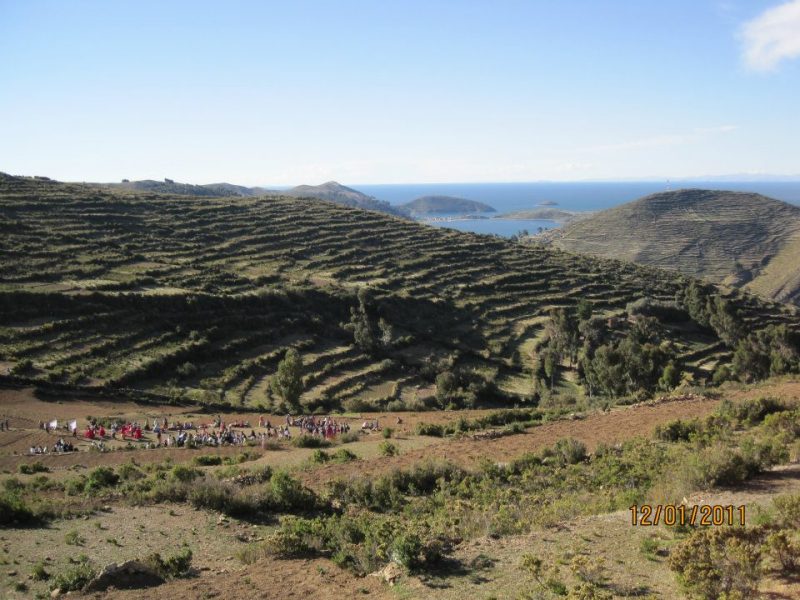Think twice before eating your ‘Ancient Grains’
Posted on December 18, 2018

Lake Titicaca, 2011
Up until about 2010, when thinking of Bolivia, little more probably came to an average Westerner’s mind than the illicit drug trade. Through it’s ethnoscapes and mediascapes, Bolivia has long been misunderstood. It is one of Latin America’s poorest, landlocked countries, with a rich, diverse history and culture. Long before nation-states divided the Andean region, Indigenous Aymara and Quechua communities inhabited the mountainous zones, living an intimate coexistence with nature. Mother Nature, “pachamama”, is at the center of Andean indigenous culture. Their deep knowledge, intimacy and respect for the environment is folded into every aspect of their lives – from nutrition and medicinal healing, to livelihood, spirituality and community.

Andes, 2011
However, colonization, industrialization, globalization and of course, capitalism, have been damaging forces for these ancient communities. Today, they make up Bolivia’s poorest population. Climate change combined with natural resource extraction has resulted in biodiversity destruction and the loss of medicinal plants. Global privatization made once accessible resources unaffordable, and ultimately many indigenous families have had to leave their sacred farm land to move into the cities in search of jobs.

Lake Titicaca, 2011
But the past 15 years however have been notable for this community. A popular uprising of activists and cocaleros (Coca farmers) in 2003 against the U.S. privatization of natural gas ultimately led to the election of the first indigenous Bolivian president, Evo Morales, who was a Coca farmer himself. This was an exciting moment for the community, as they had never been advocated for on a national level. A few years later, the organic health craze took hold in US, and with it chatter of the miraculous health benefits of ancient grains like amaranth, millet, spelt and quinoa. Quinoa has been grown in the Andes for over 7,000 years, but it suddenly had a new media and finoscape. What used to be disparaged by Bolivians as “comida de pobres” suddenly began selling for double, triple and eventually six times from what farmers were accustomed to. There was renewed hope in the campo, a rose-colored story for the world. President Evo Morales advertised it was the “ancestral gift from the Andes to the world.” In 2013 the UN declared it the “International Year of Quinoa.” The narrative was fairy tale-esque – that the indigenous people were able to return to and connect with their sacred land and share their lives with a world that was hungry for organic, small-batch, farm-to-table, farmer-friendly, anything.

But it’s never as good as it seems. Their small farms couldn’t keep up with demand, and the monoculture crop began depleting the soil. Meanwhile, while the rest of the world was enjoying Quinoa’s health benefits, Bolivians could no longer afford to eat it. Instead they turned to cheaper options, like white flour, rice, and sugar – obesity and diabetes rose.
While the complex dynamics that set the boom in motion received amble media attention, the bust that followed in 2014 has gone practically unnoticed in international media. This brings up important questions about the wisdom of commercializing indigenous food as a development strategy. There were no institutional mechanisms in place to protect the small Andean farmers, and instead, farmers with no cultural link to the grain but with the capital and technology to invest in large, productive farms, suddenly began outcompeting them. Bolivia and Peru once accounted for 92 percent of the world quinoa production, but now countries like France, England, Canada and Italy have beyond mass production of the grain. In a single-bottom line economy, the big fish always win.

The quinoa boom-bust is yet another case study of the barbarities of global capitalist markets and the vulnerability it causes small farmers. The Irony however, is the story, and mediascape, that consumers are paying for. We may not be living in “Natural Capitalism” but many would like to believe we are – in fact, we are being told we are. We take our compost and non-plastic bags to the farmers market, buy milk from “happy cows” and ethically sourced coffee from cheerful family farmers. I would imagine most people today eat their Quinoa, thinking they are supporting an ancient indigenous culture. In this case, it’s not about consumer intent.
So how do we intervene in this flawed, global, economic system? Bolivia’s tactics of grass-roots uprising don’t seem strong enough to protect against market forces. This might be a vote for top-down change, but I’ll save that for a debate.
[1] Hawken, Paul et al. “Natural Capitalism: creating the next industrial revolution.” 1999.
[2] Appadurai, Arjun. “Disjuncture and Difference in the Global Economy.” University of Pennsylvania, 1990.
[3] https://www.nytimes.com/2011/03/20/world/americas/20bolivia.html
[4] https://nacla.org/news/2018/03/12/quinoa-boom-goes-bust-andes
[5] https://www.aljazeera.com/indepth/inpictures/2017/08/quinoa-harvesting-bolivia-superfood- 170809095217225.html